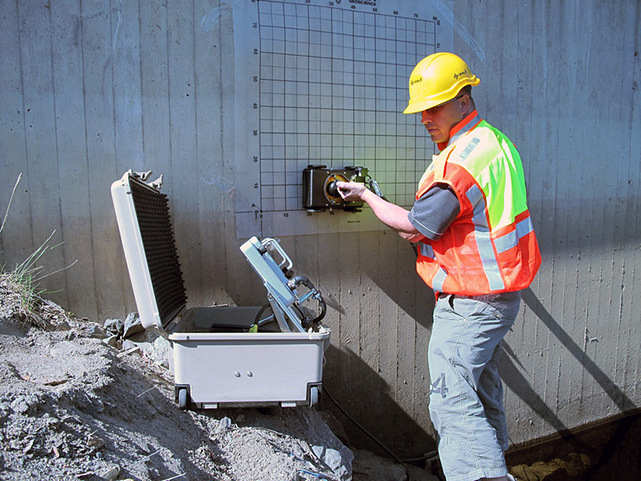Discovering the Depths: A Comprehensive Guide to Concrete Scanning and Its Diverse Applications
In the world of building and framework growth, the careful process of concrete scanning holds an essential function in guaranteeing the architectural honesty and safety and security of jobs. As technology continues to advance, the applications of concrete scanning have expanded far beyond simple surface-level evaluations. From spotting rebar and post-tension cable televisions to drawing up conduits and spaces concealed within concrete frameworks, the capabilities of contemporary scanning techniques are both remarkable and important. Nevertheless, the true depth of concrete scanning's possible reaches even additionally, branching into unanticipated industries and triggering cutting-edge services. The interconnected web of opportunities that concrete scanning presents is not just remarkable yet also essential for the advancement of various industries.
Significance of Concrete Scanning
Understanding the relevance of concrete scanning is important in guaranteeing the security and integrity of structures during building and construction and improvement jobs. Concrete scanning makes use of sophisticated modern technologies such as ground-penetrating radar (GPR) and electromagnetic induction to spot ingrained objects, spaces, or various other abnormalities within concrete structures.
Furthermore, concrete scanning plays an essential role in making certain conformity with building codes and regulations that mandate the security of existing architectural parts during building and construction activities. By accurately drawing up the inner make-up of concrete, scanning modern technologies enable building and construction professionals to make enlightened choices that support the architectural stability and resilience of buildings and infrastructure projects. In significance, the importance of concrete scanning depends on its capacity to safeguard both the architectural stability and the employees associated with building and construction ventures.
Technologies Utilized in Concrete Scanning
Concrete scanning depends on sophisticated modern technologies such as ground-penetrating radar (GPR) and electromagnetic induction to accurately discover ingrained things and abnormalities within concrete frameworks. Ground-penetrating radar operates by discharging high-frequency electromagnetic waves into the concrete. When these waves run into various products or voids within the concrete, they recuperate to the surface area, allowing the GPR system to develop an in-depth subsurface image. This innovation is specifically effective in finding rebar, post-tension wires, avenues, and various other objects installed in concrete.
Electromagnetic induction, on the various other hand, works by producing magnetic fields around a concrete structure via a transmitter coil. When steel items are present within the concrete, they disrupt these electro-magnetic fields, causing eddy currents to stream with the metal. By gauging the adjustments in the magnetic fields with a receiver coil, the system can determine the area of metallic objects in the concrete.
These advanced innovations play a crucial function in non-destructive testing, making certain the safety and honesty of concrete structures in different markets.
Applications in Construction Industry
Within the building sector, concrete scanning technology locates diverse applications that improve project performance and security. One key application is the discovery of rebar, post-tension wires, and other ingrained items before drilling or cutting right into concrete structures. By properly mapping out these elements, construction groups can avoid pricey damages, like it ensure architectural stability, and prevent possible security hazards. Additionally, concrete scanning is utilized for situating spaces, such as air pockets or areas of damage within concrete, which can jeopardize the overall toughness of a structure. By identifying these gaps at an early stage, construction specialists can take essential steps to address them and preserve the click this resilience of the structure. Furthermore, concrete scanning plays an important function in top quality control by confirming the thickness of concrete covers over support, making certain conformity with layout requirements and standards. In general, the applications of concrete scanning in the building and construction industry add substantially to improving project process, reducing risks, and supplying high-quality results.

Security Advantages of Concrete Scanning
In the realm of building safety, the application of concrete scanning technology offers a critical benefit in preemptively determining potential threats and strengthening structural honesty. By utilizing innovative scanning methods such as ground-penetrating radar (GPR) and electromagnetic induction, building and construction teams can precisely find rebar, post-tension cables, avenues, and other surprise items within concrete frameworks. This proactive approach significantly minimizes the risk of accidental strikes during drilling, cutting, or coring tasks, consequently stopping costly problems, injuries, and job hold-ups.
Moreover, concrete scanning boosts employee security by offering real-time details regarding the architectural condition of concrete elements. By resolving potential security problems quickly, concrete scanning adds to developing a protected working setting and minimizing the chance of architectural failings or crashes on construction sites.
Future Fads in Concrete Scanning
Emerging advancements in scanning technology are positioned to transform the area of concrete evaluation and evaluation. By harnessing the power of AI, these systems can analyze vast quantities of data gathered throughout scanning processes to supply more accurate and detailed understandings right into the condition of concrete structures.
One more substantial trend is the development of more mobile and easy to use scanning gadgets. Miniaturization of scanning devices allows for less complicated access to confined rooms and remote areas, making assessments extra thorough and click over here now reliable. In addition, developments in cordless communication innovations enable real-time information transfer and analysis, assisting in quicker decision-making processes.
Moreover, there is a growing concentrate on sustainability in concrete scanning technologies - RainierGPR Concrete Scanning. Producers are increasingly including eco-friendly products and energy-efficient functions right into their gadgets to minimize environmental influence. These future fads are established to improve the effectiveness, precision, and sustainability of concrete scanning techniques, shaping the sector's future landscape
Final Thought
Finally, concrete scanning plays a vital role in the building and construction market by ensuring the safety and security and effectiveness of various jobs. By utilizing advanced modern technologies, such as GPR and radar imaging, specialists have the ability to precisely spot prospective threats within concrete structures. The applications of concrete scanning are substantial and continue to progress, making it a vital device for maintaining the integrity of buildings and infrastructure. As modern technology developments, the future of concrete scanning holds appealing advancements for enhancing building procedures.
